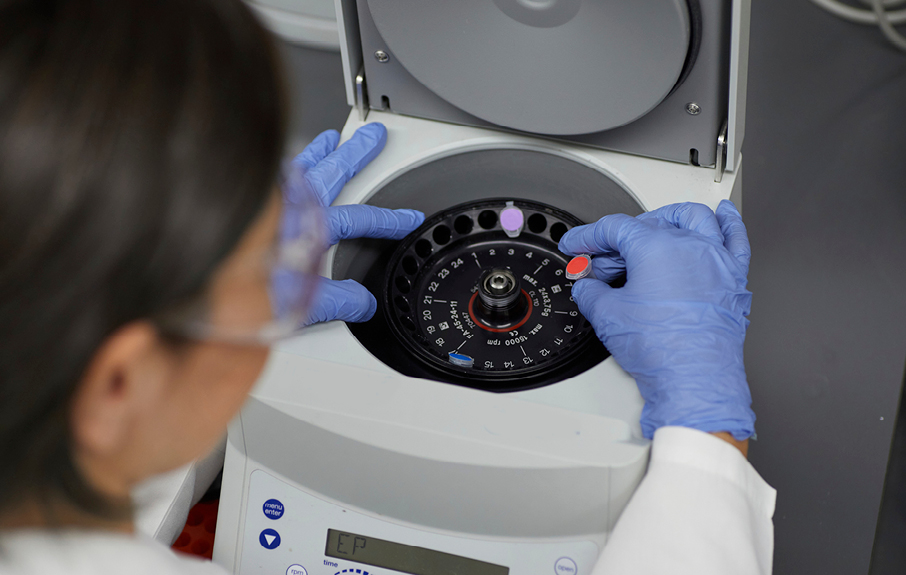Would you still eat your favourite snack if you didn’t know what was in it?
Food safety isn’t just a matter of regulations – it’s a matter of trust. South African consumers expect transparency from the brands they support, and leading retailers like Woolworths know this. As shoppers become increasingly mindful of health and sustainability, the demand for rigorous food testing has never been higher.
Behind the scenes, laboratories like Microchem – supported by Chemetrix – are working tirelessly to ensure that what’s on your plate meets the highest standards of safety and quality.

The challenge facing South Africa’s retailers
In an age of global food supply chains and growing health concerns, food testing is no longer a “nice-to-have” – it’s essential.
Local retailers face mounting pressure to uphold not only national safety standards but also consumer expectations around integrity, traceability and clean labels.
For quality-driven retailers like Woolworths, the challenge lies in ensuring that food is tested accurately and efficiently, with results that can be trusted. From imported fruit and vegetables to locally produced meat and dairy, every product must be analysed for contaminants, residues and adulterants before reaching the shelves.
🖥️ Watch the Recent Advances in the Routine Analysis of Dioxins in Food and Environmental Samples webinar and explore how to implement triple quadrupole GC/MS for the routine analysis of dioxins in environmental and food samples according to EPA and SANTE guidelines.

When ‘safe’ isn’t simple: The complex nature of food testing
Food safety testing involves identifying and quantifying chemical residues such as pesticides, mycotoxins, additives, allergens, and heavy metals. In particular, volatile organic compounds (VOCs) and environmental pollutants such as dioxins or plasticisers are increasingly under scrutiny.
The complexity of modern food products and their varied matrices – from fatty snacks to fibrous grains – presents analytical challenges that demand robust, high-sensitivity instruments. Traditional methods may struggle with accuracy, throughput, or regulatory compliance, especially when laboratories are expected to produce results quickly and cost-effectively.
🖥️ Watch the Analysis of Pesticides in Complex Food Matrices webinar and discover how to increase your lab’s productivity with simultaneous target quantitation and suspect screening on a single platform.

Identify the unknowns
One of the most significant breakthroughs in food testing is non-targeted screening, which allows labs to detect unknown or unexpected contaminants without having to pre-select specific compounds.
The Agilent 7250 GC/Q-TOF, available through Chemetrix, is purpose-built for this. It pairs high-resolution gas chromatography with time-of-flight mass spectrometry, enabling analysts to confidently identify trace compounds in complex food samples.
With this level of insight, labs like Microchem can test for a broader range of contaminants with exceptional clarity and speed. Whether it’s detecting pesticide residues in leafy greens or verifying additive levels in processed snacks, the 7250 GC/Q-TOF allows for greater coverage – and fewer blind spots.
📚 Download the Ensure a Healthier World from the Ground Up application compendium and discover why precise, reliable, and efficient analytical workflows are so important.

Stay fast, focused and compliant
For routine, high-throughput testing where speed and accuracy are vital, the Agilent 5977C GC/MSD remains the gold standard. This system excels at targeted analysis of known contaminants such as preservatives, residual solvents, and food packaging migration chemicals.
Its robust performance, low detection limits and smart functionality make it ideal for commercial labs needing reliable results under tight deadlines. In Microchem’s case, the 5977C allows for cost-efficient testing at scale – from raw materials to final packaging – without compromising quality or regulatory compliance.
At Chemetrix, we help our clients integrate instruments like the 5977C seamlessly into their workflows, providing technical support, training and ongoing guidance to keep things running smoothly.
📚 Download the Food Safety and Authenticity Testing flyer for tools that significantly improve on the traditional targeted analyses, which can miss new and emerging contaminants.

Retailers, labs and technology working together
Local food retailers benefit tremendously from having labs like Microchem – and partners like Chemetrix – at their side. With the right technology and know-how, they can proactively identify risks, validate supplier claims and guarantee product quality with confidence.
This builds not only safer food systems but stronger relationships with consumers. It’s why Woolworths continues to lead in the food retail sector – their commitment to testing, transparency and traceability has earned them long-standing trust from South African shoppers.
For laboratories, having a trusted technology partner like Chemetrix can be the difference between reactive testing and proactive problem-solving. We don’t just sell instruments – we deliver the confidence that comes from reliable, accurate, and efficient analysis.

Test smarter. Trust more. Partner better.
Food safety matters – and staying ahead of the curve requires the right tools, expert support and a commitment to excellence. Whether you’re a lab looking to expand your capabilities or a food retailer determined to protect your brand, Chemetrix is here to help.
Ready to see what’s really in your food – and prove it to your customers?
Explore our full range of solutions and connect with our team to learn how we can support your food testing goals with trusted Agilent technologies.





































